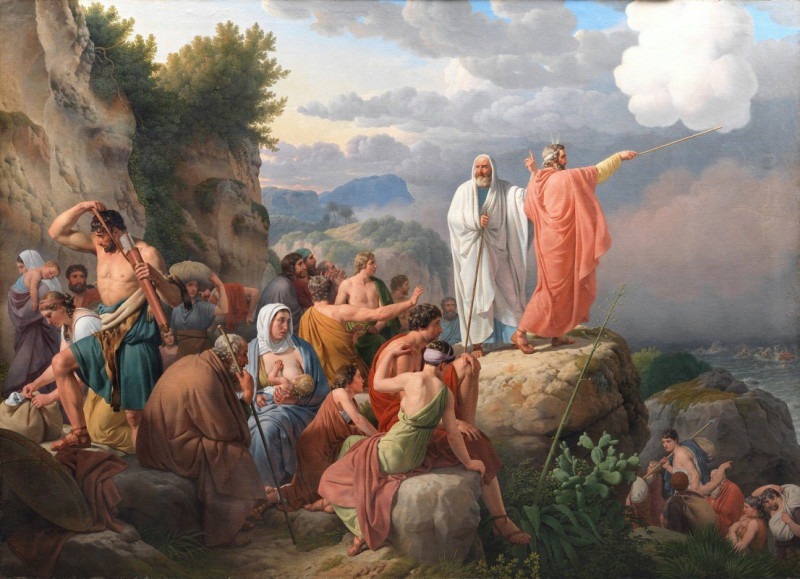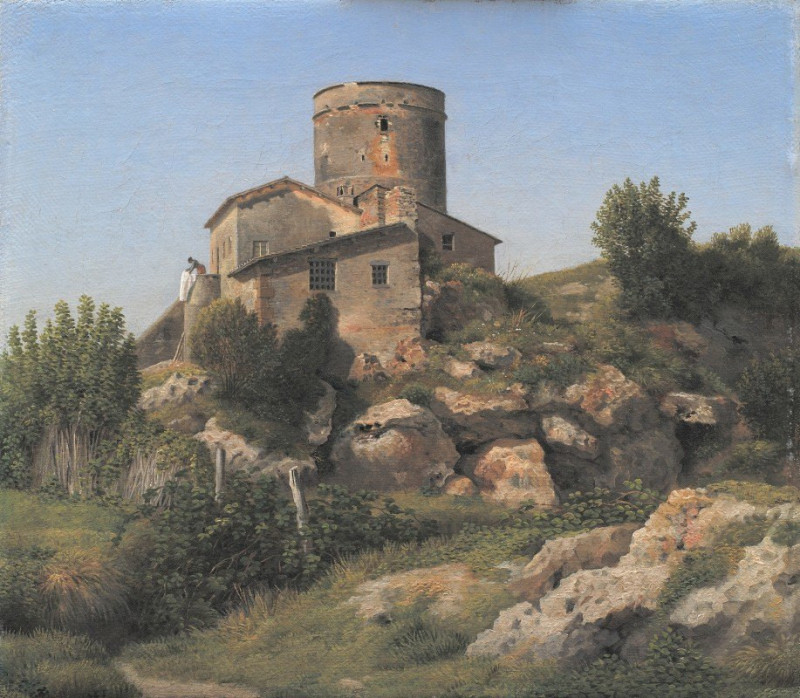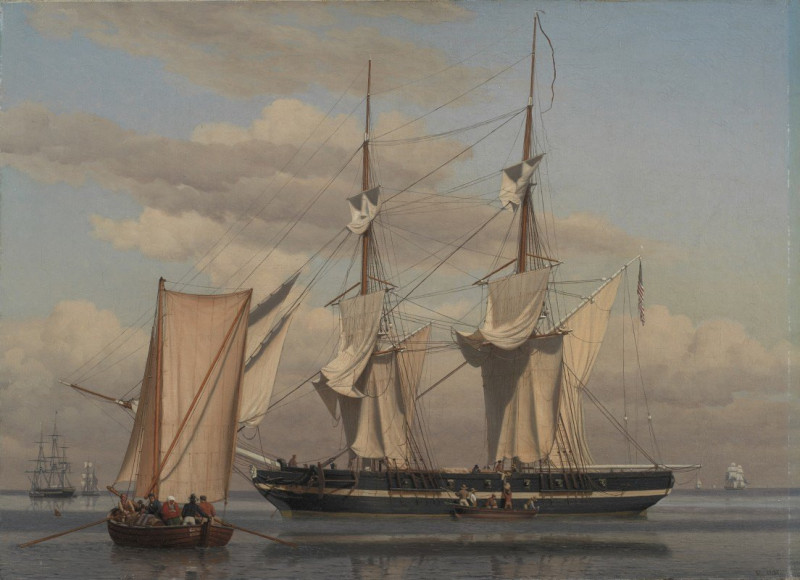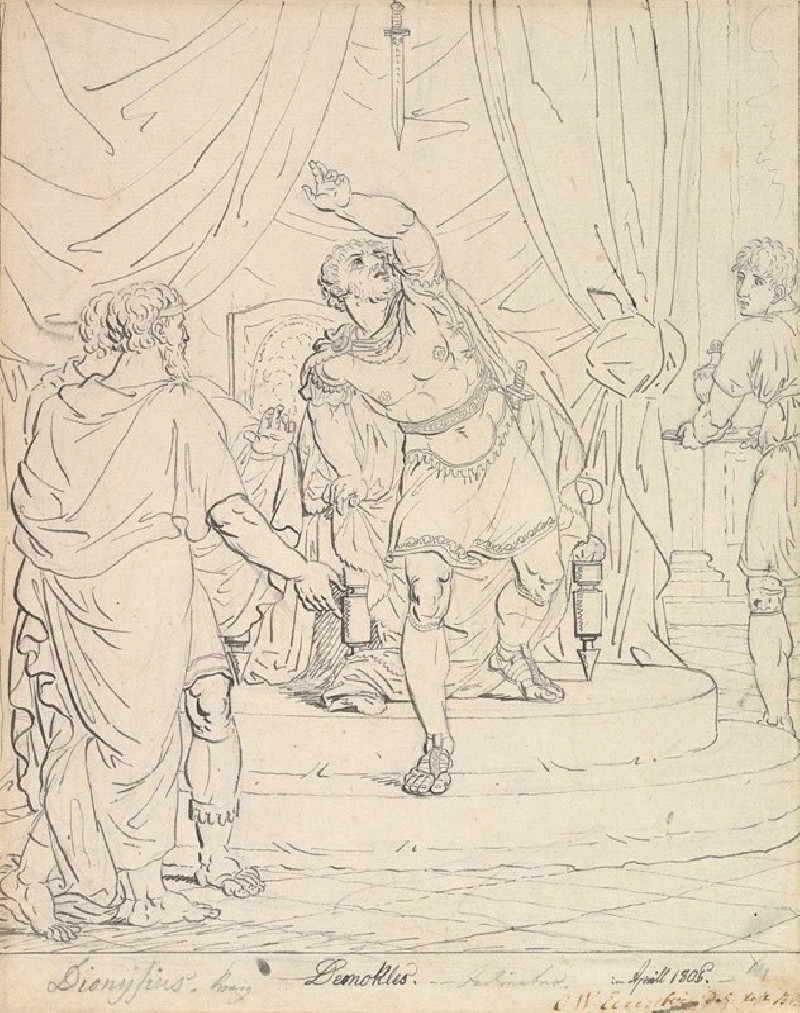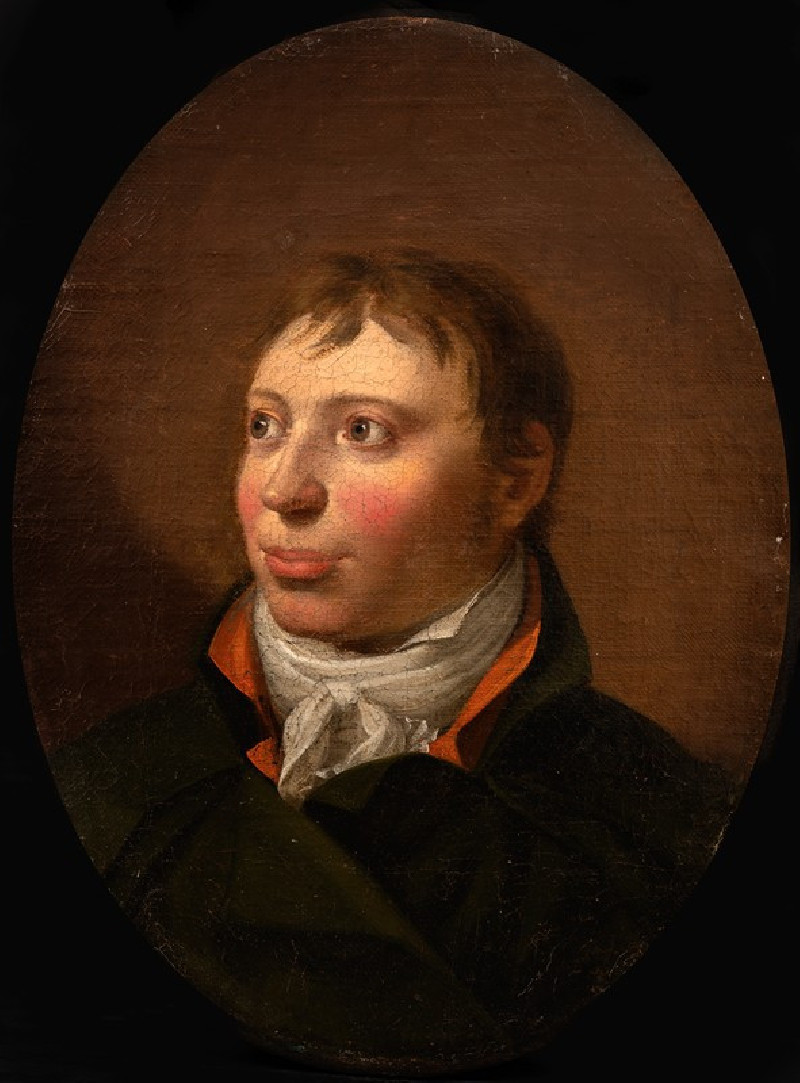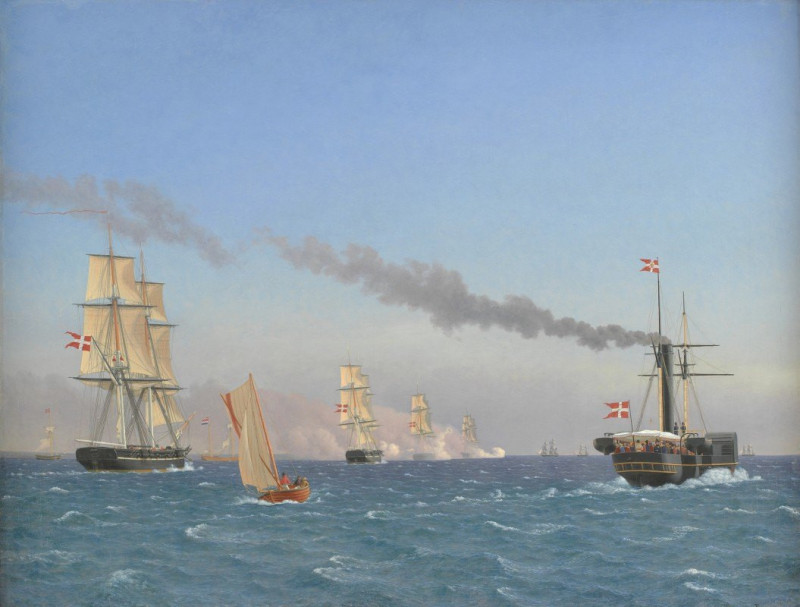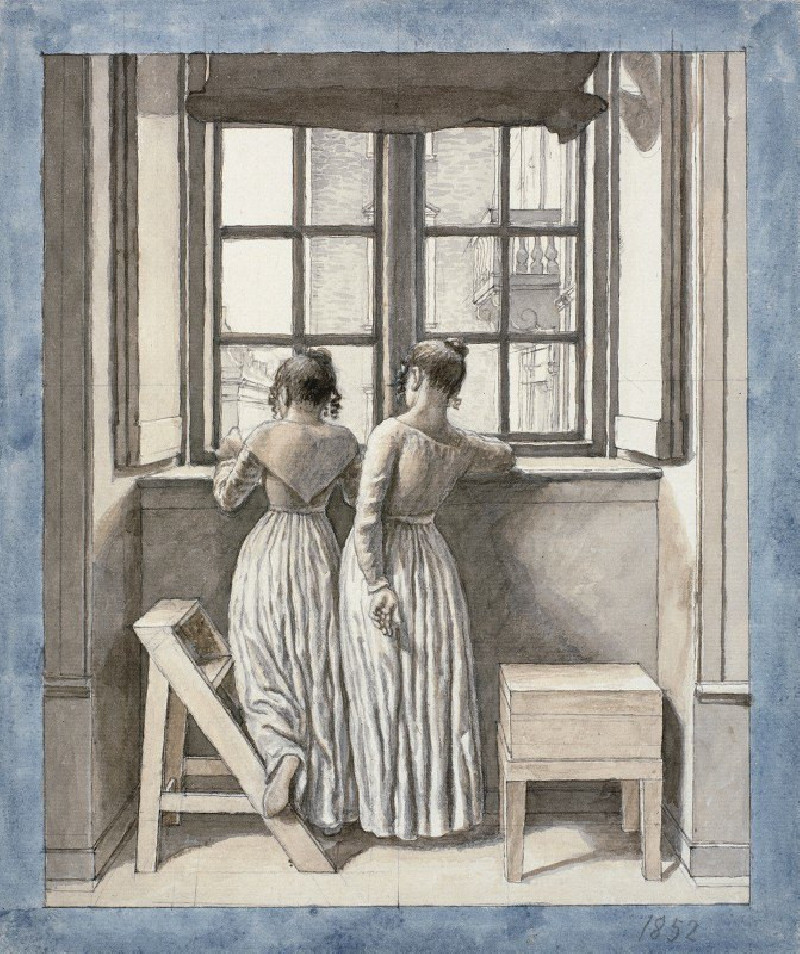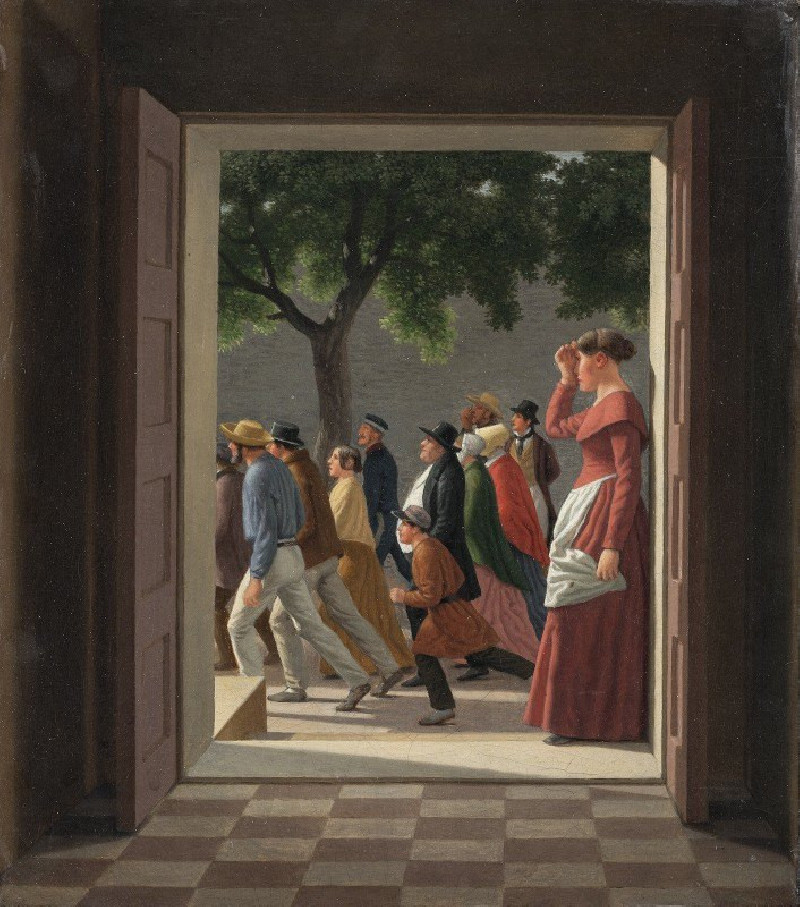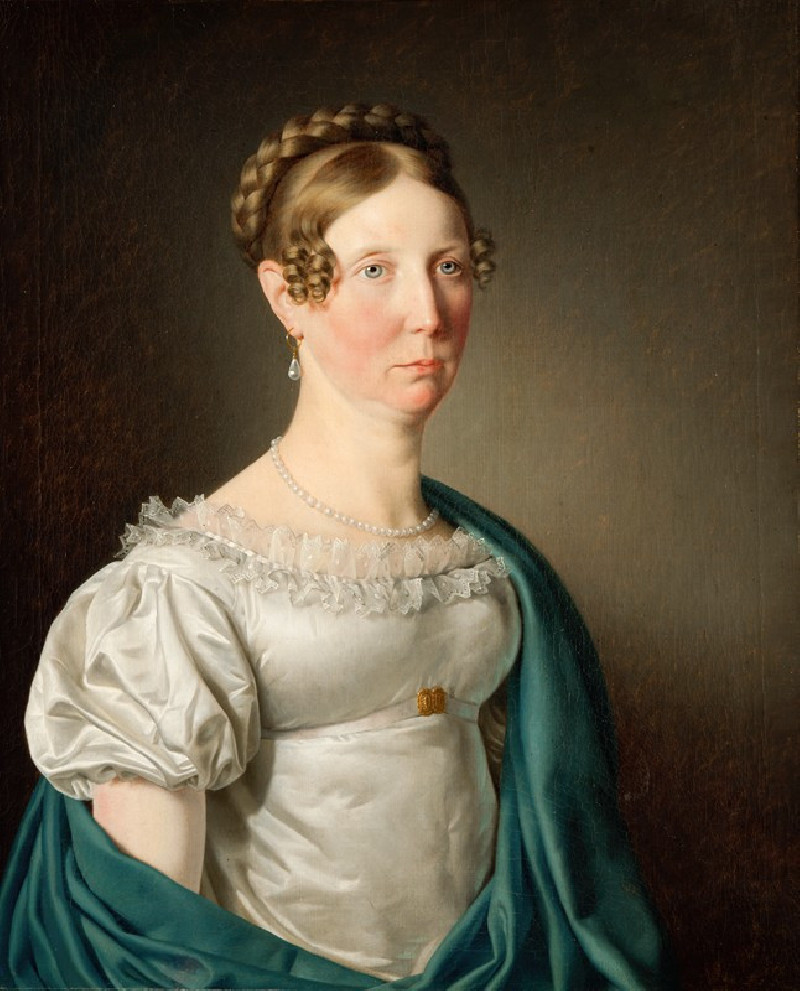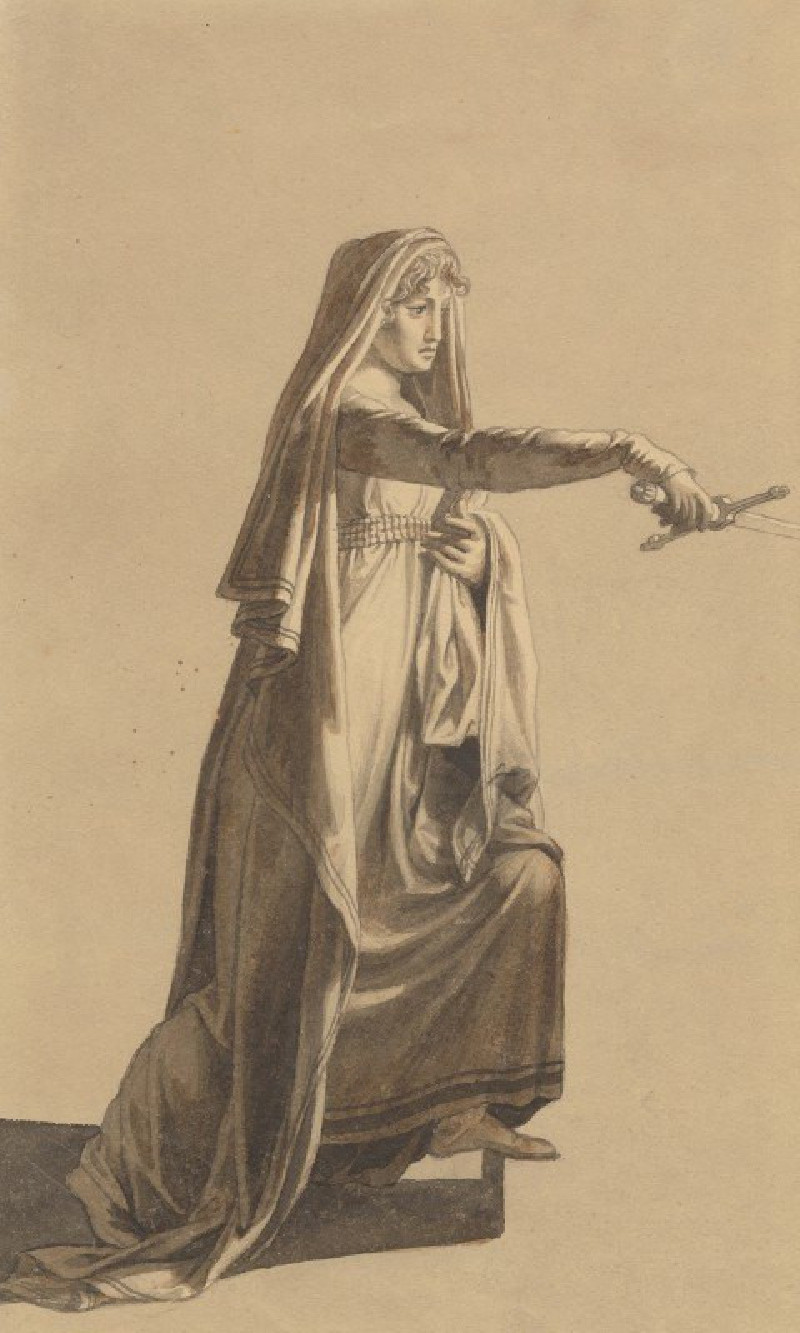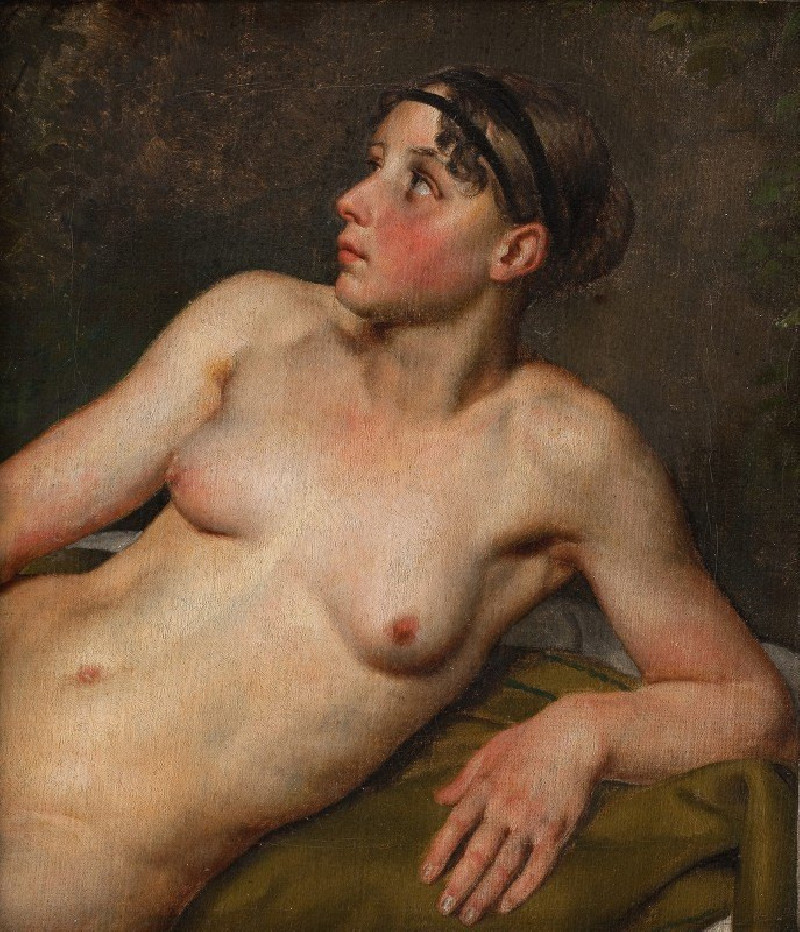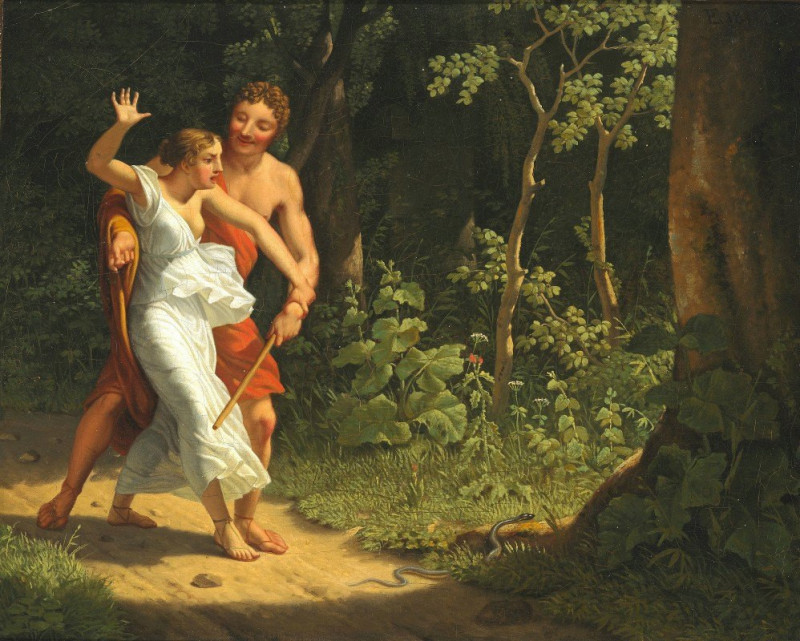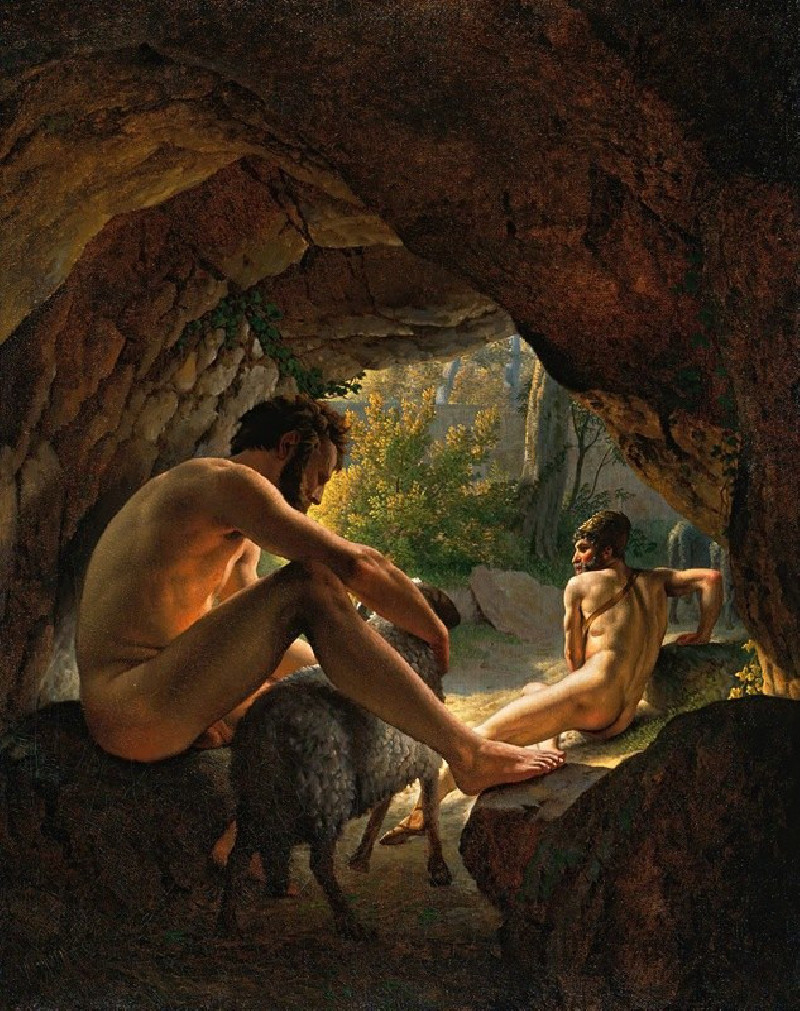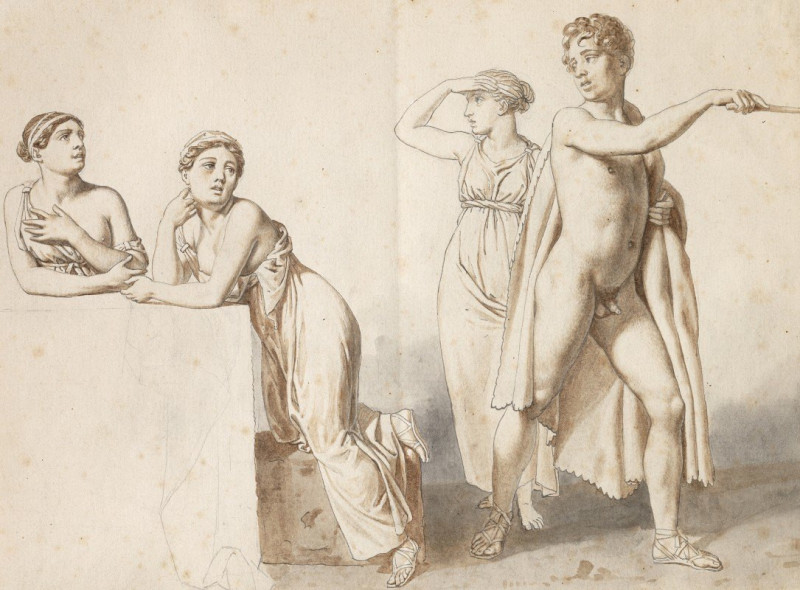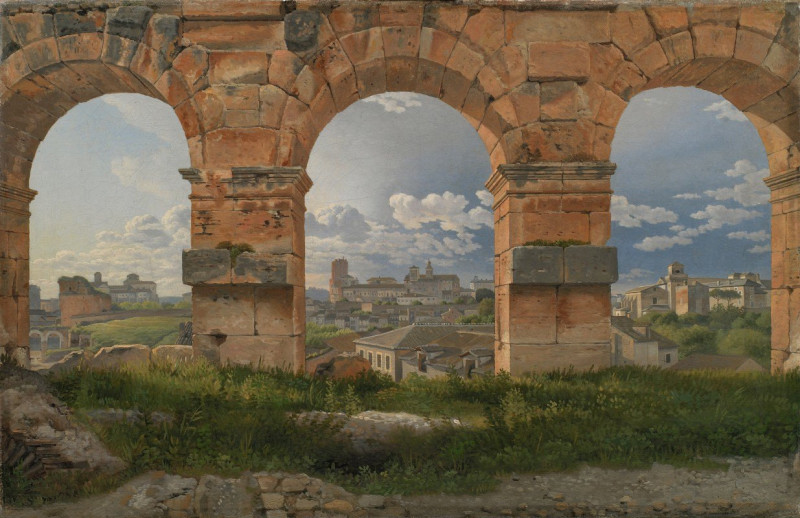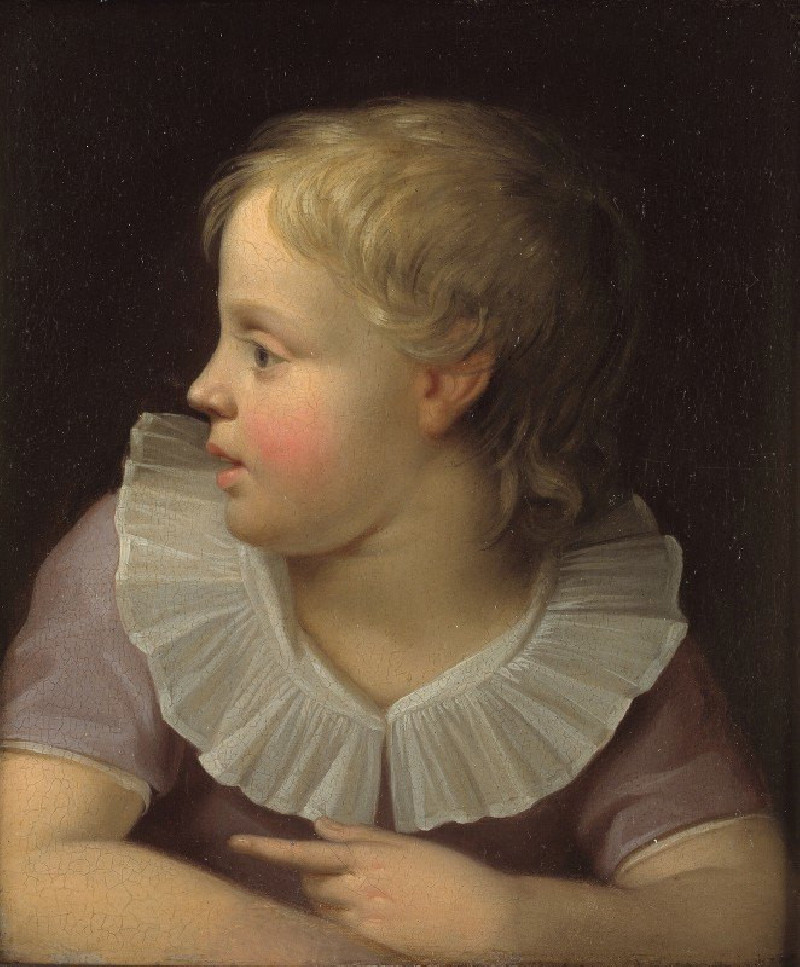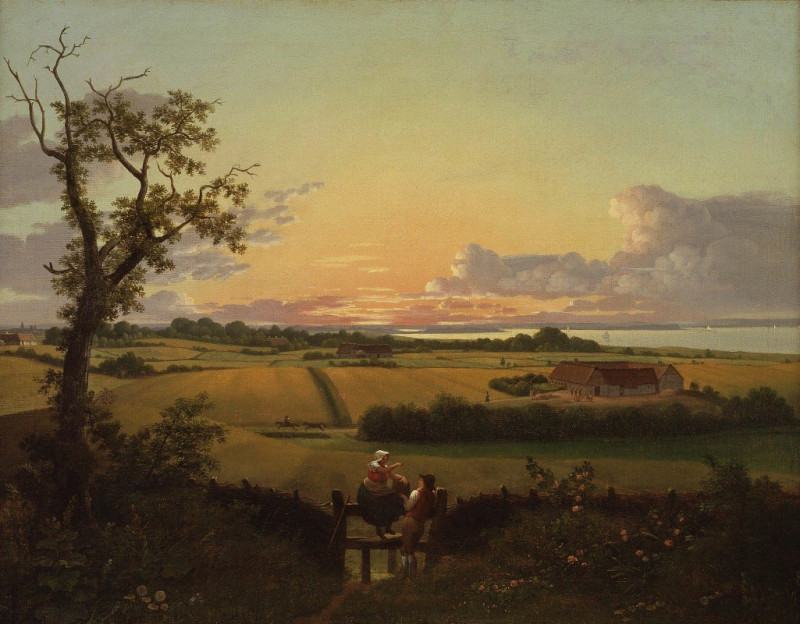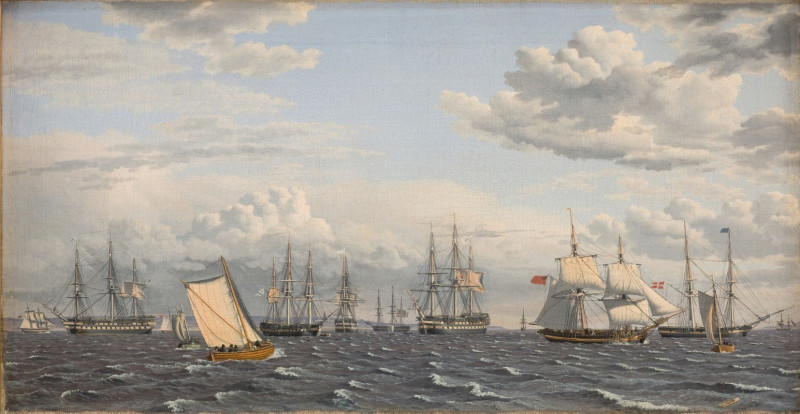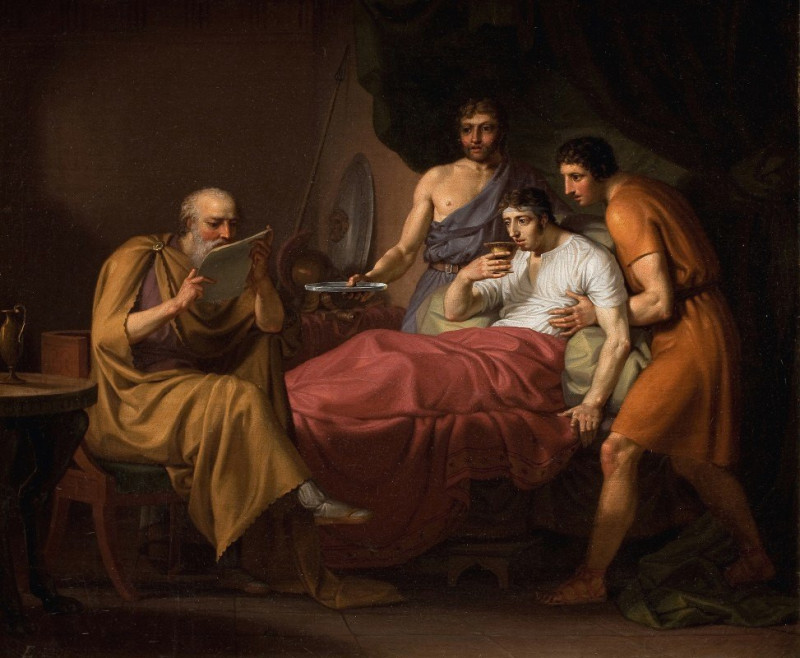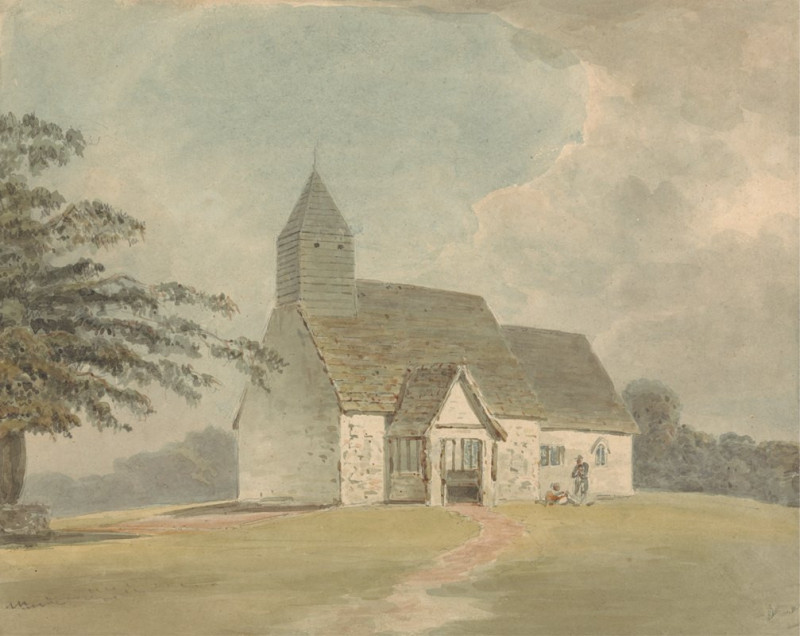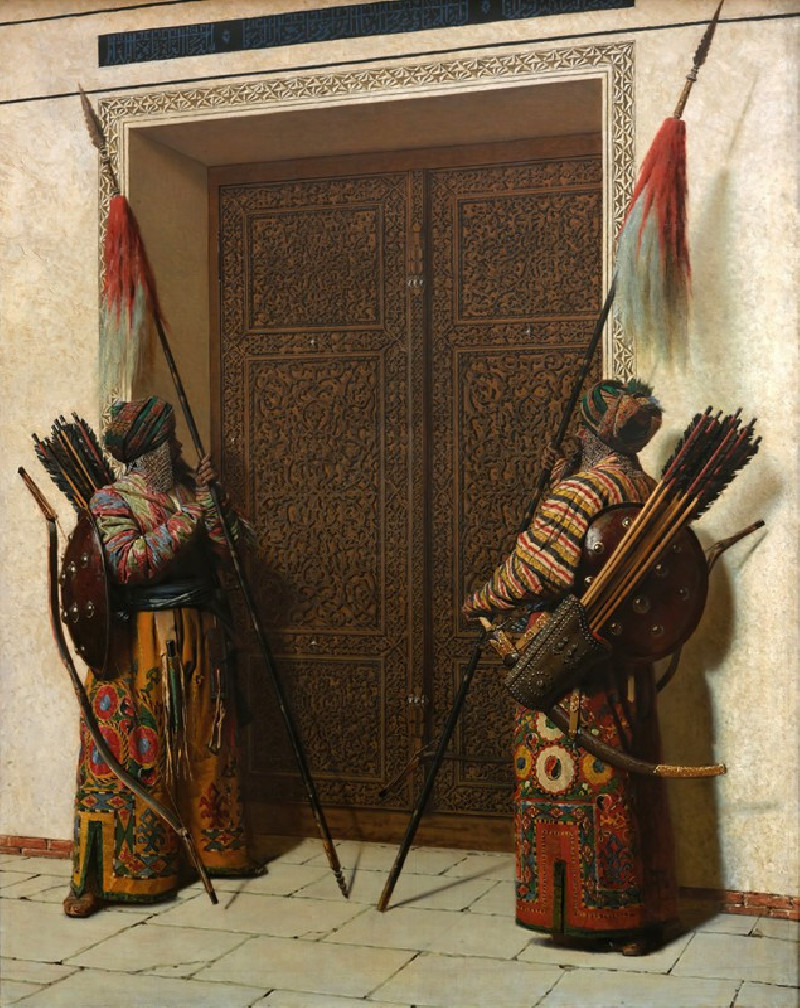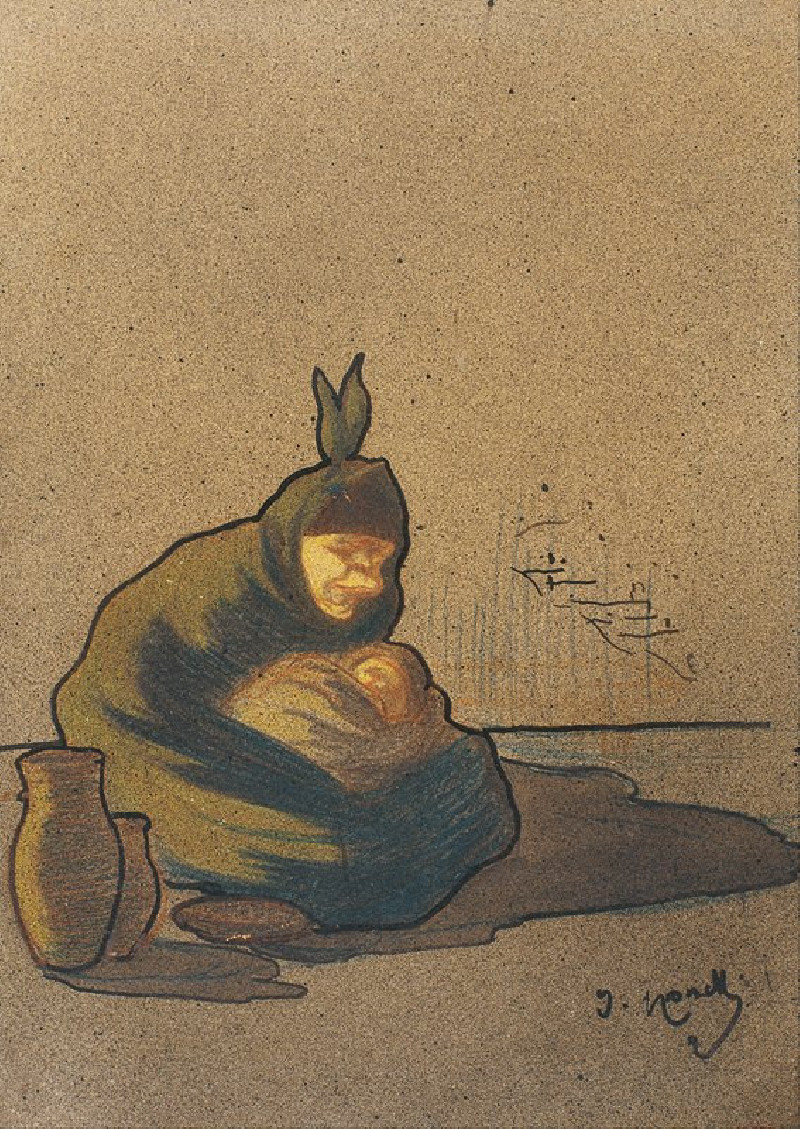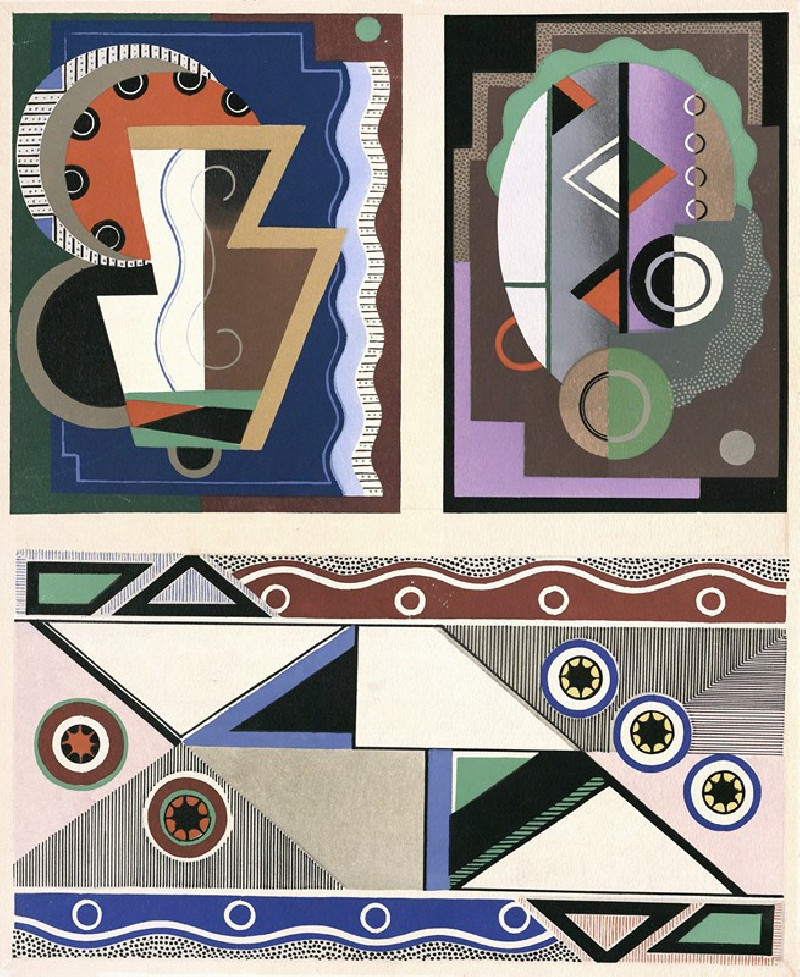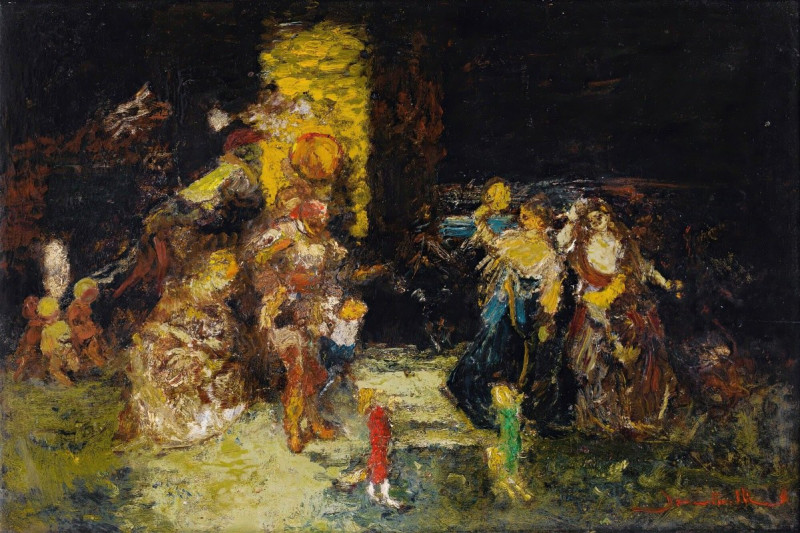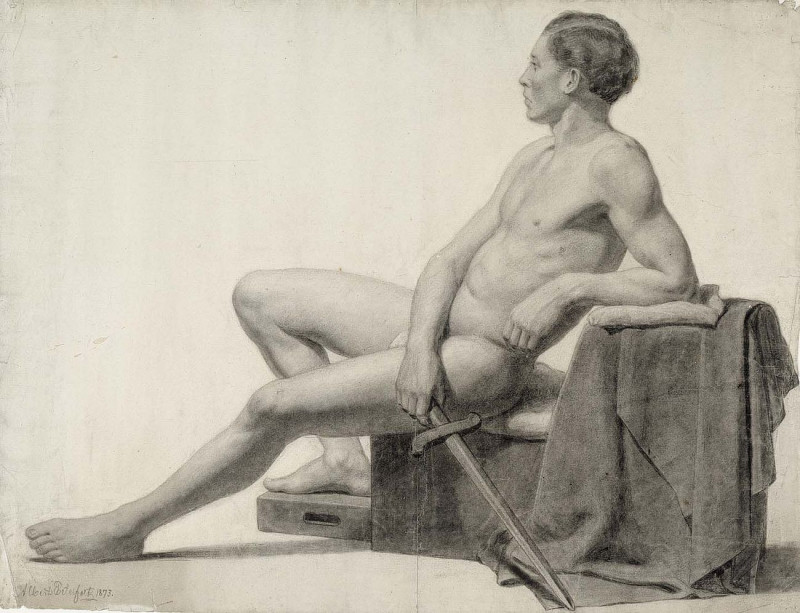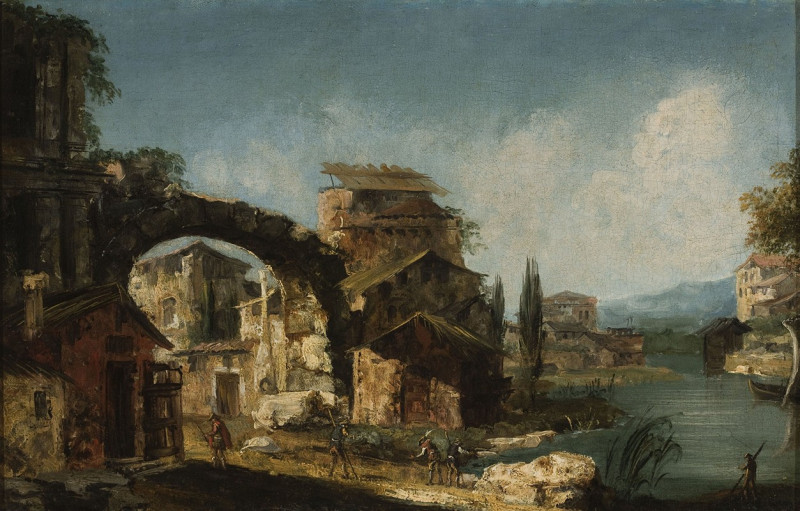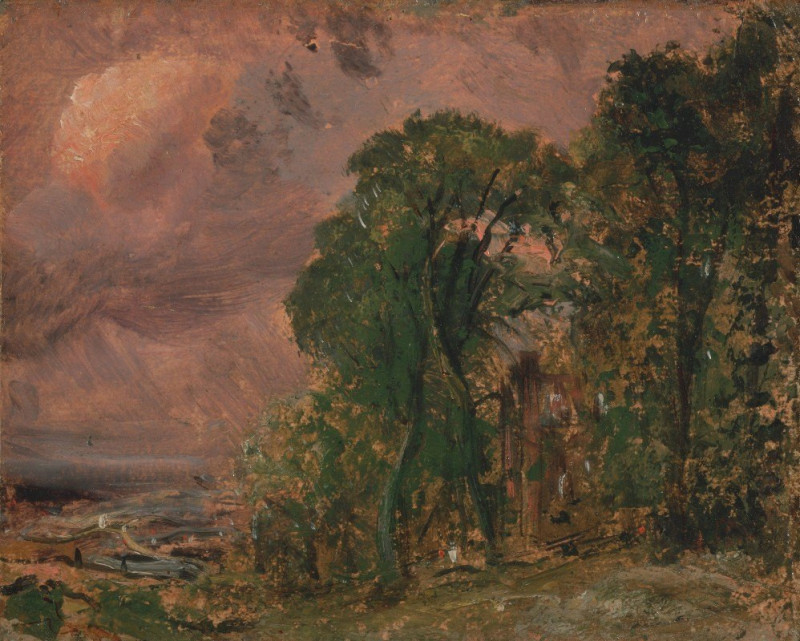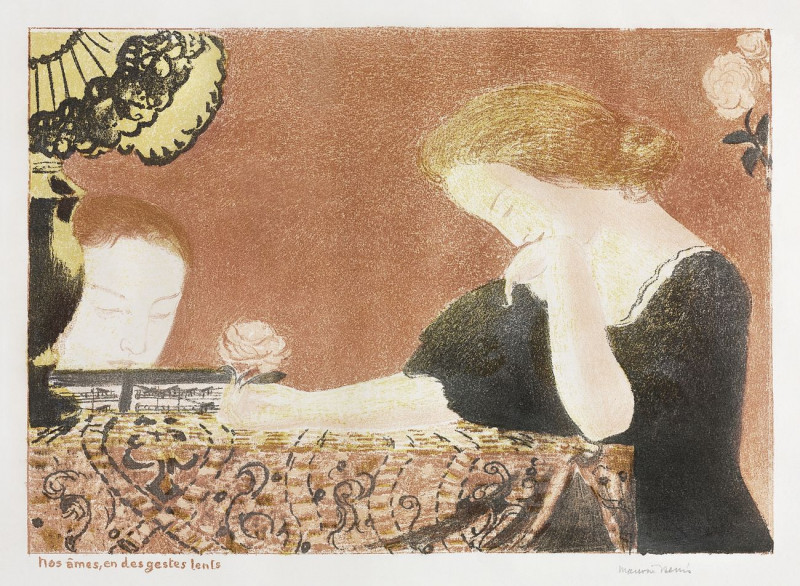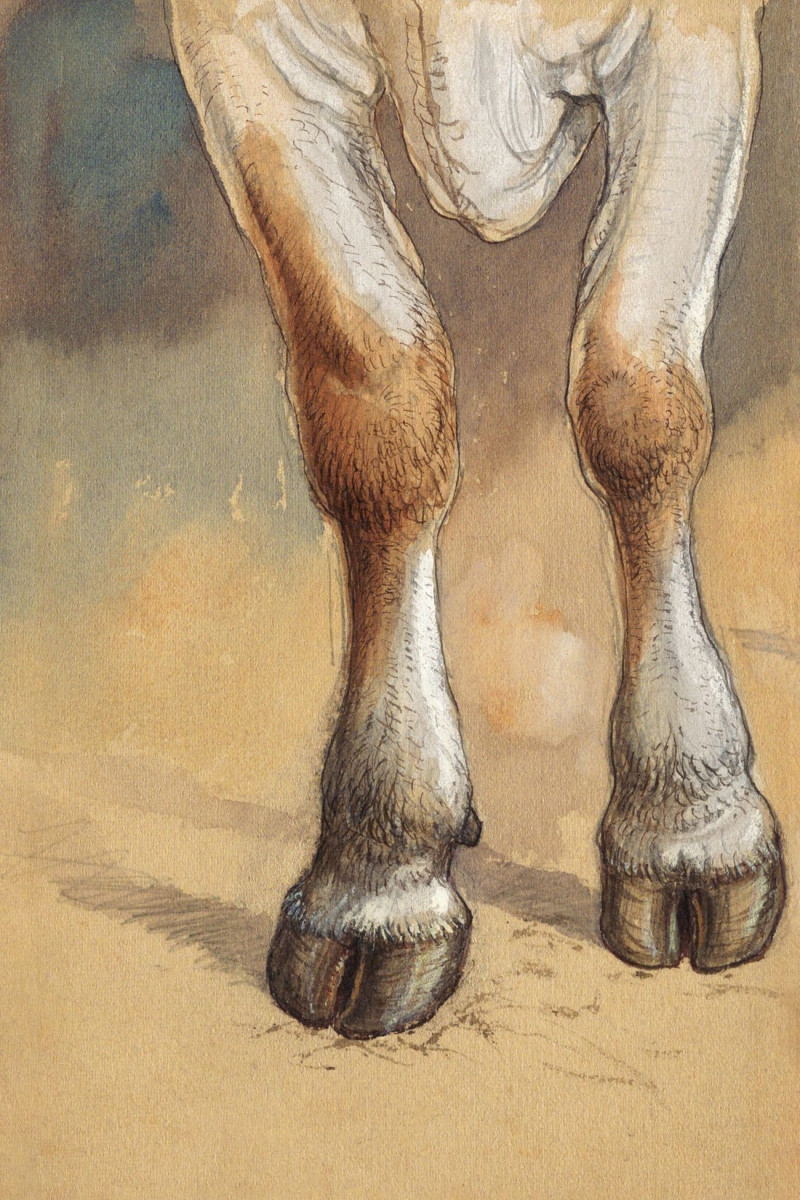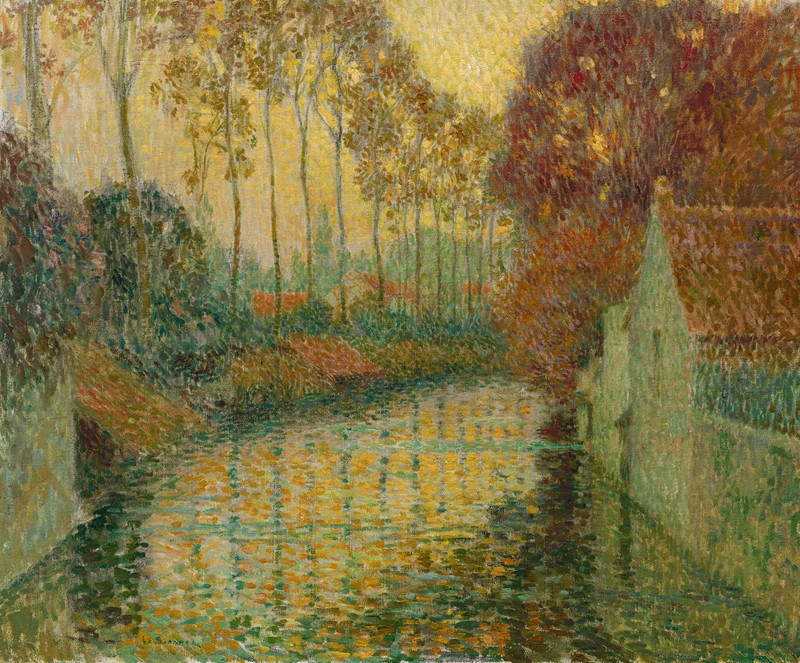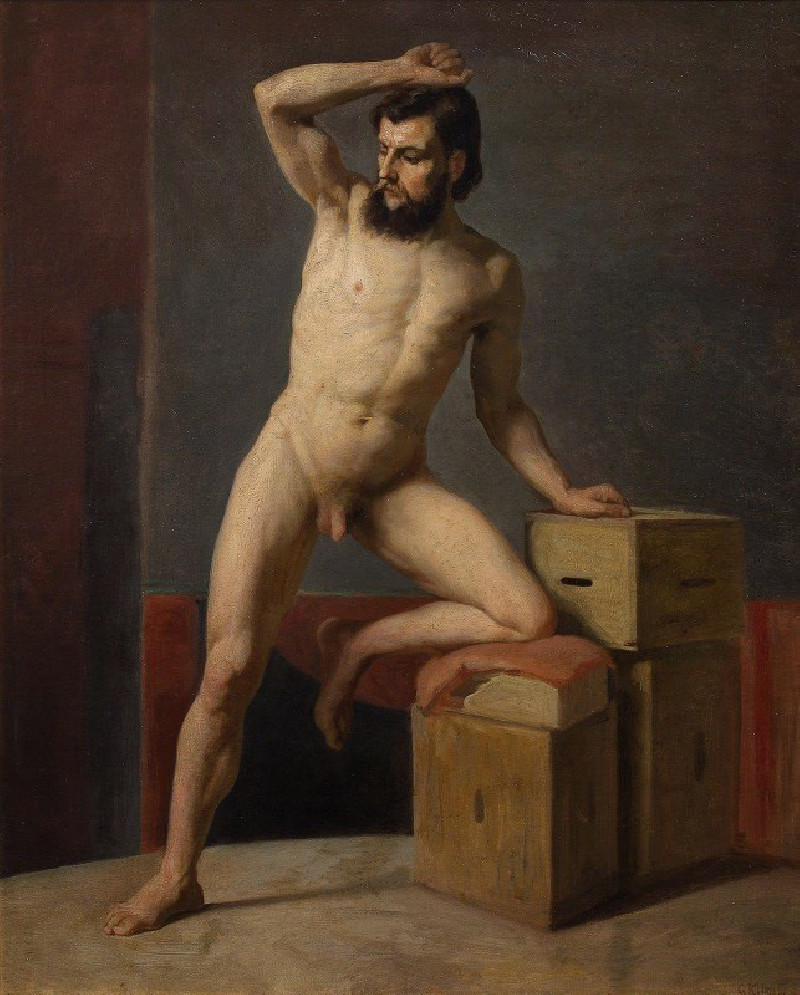To israelitter på en klippeblok (1812 – 1811)
Technique: Giclée quality print
Recommended by our customers
More about this artwork
Christoffer Wilhelm Eckersberg, often heralded as the father of Danish painting, brings to life the nuanced forms and delicate positions of human figures in his 1811-1812 drawing, "To israelitter på en klippeblok" (Two Israelites on a Rock Block). This pencil work showcases Eckersberg’s meticulous attention to anatomy and his mastery in capturing the human body in motion and repose.In the drawing, two nude male figures are presented against a sparse background that directs all attention to their forms and actions. The figure standing erect gazes directly at the viewer with an intense and steady expression, his arms slightly extended as if he is either balancing himself or preparing to act. The seated figure, crouched on one knee, stretches forward dynamically, pointing outward beyond the frame. His posture suggests movement and perhaps a narrative element, as if he is seeing something off in the distance or engaging with an unseen presence.Eckersberg's skill in drawing is evident in the precision of the muscle tones and the realistic depiction of the physical strain evident in the crouched figure’s position. The dynamic contrast between the standing figure’s poised calm and the active gesture of the crouched figure creates a visual dialogue within the composition. This piece is a prime example of studies from life that were typical of the era, designed not only to showcase artistic skill but also to explore human emotion and physicality through classical and biblical themes.
Delivery
Returns
Christoffer Wilhelm Eckersberg (2 January 1783 – 22 July 1853) was a Danish painter. He went on to lay the foundation for the period of art known as the Golden Age of Danish Painting, and is referred to as the "Father of Danish painting".


